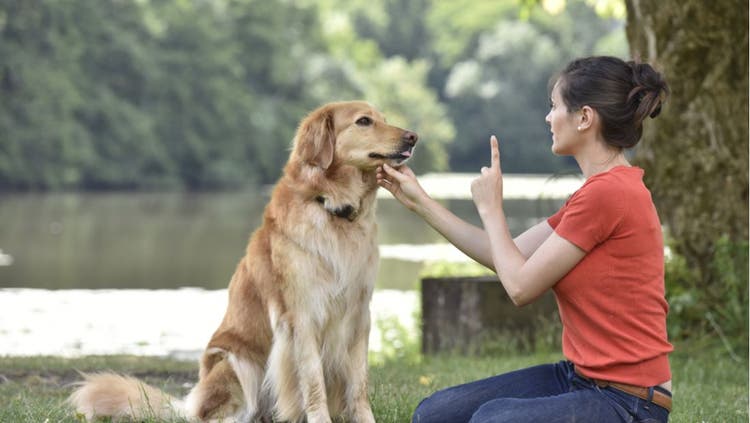
3 Dog Training Tips From Professionals
February is National Dog Training Education Month, which dedicates a full 4 weeks to educating dog parents about the dos and don’ts of dog training. In an effort to help kick off the festivities, we’ve rounded up three great tips from professional dog trainers from around the country.
Here’s what they want you to know:
Aggressive Actions Aren’t Always What They Seem
Nicole Larocco, Philly Unleashed
Philadelphia, Pennsylvania
Your dog just growled… did you remember to thank them?
When people see a growling dog, most automatically assume that precious Fluffy has morphed into a dangerous animal. In reality, the majority of aggressive responses in dogs are a result of them trying to tell you that they’re anxious or fearful about a particular person, place, or thing.
Dogs use aggressive actions in order to convey a message to a person or animal that they are uncomfortable about what’s occurring at that moment, and need space to work things out. So, a warning growl or snap that didn’t hurt anyone is actually a very polite form of communication (in dog language anyway).
Instead of punishing your dog the next time they growl, think about what is actually making them uncomfortable. Then think about making a plan for managing or modifying either their behavior or the situation so that it doesn’t happen again.
New Puppies Must Be Leash Trained For Walks
Colleen Steckloff, LAK9’s
Los Angeles, California
When you get a new puppy, it’s important to get them used to being on a leash for walks, which is a new concept for them. Make sure that you start the process in a safe place, so that the puppy isn’t exposed to unhealthy or unvaccinated dogs. If it seems too hard to avoid other dogs, you can always start the training at home, where you won’t have to worry about taking them out into the unknown.
No matter where you choose to start, the first thing you should do is introduce them to a leash, which will help them build confidence in new situations. A great way to get them to follow the leash is by Influencing their nose using smelly treats. This acts as a great distraction and helps to ease them into the process. Keep the treats on hand and use it to encourage your new puppy to follow you around the room or sidewalk. This will allow them to get used to the feeling of wearing a leash. If you’re indoors, you can even drop the leash and let it drag behind them, so they have another way to feel the leash.
It might seem silly, but this process is really important, since puppies can panic and freeze when they’re not used to the feeling of the leash. It’s also worth noting that the leash is not a tool of tension that should be used to pull or drag your dog. Always keep slack in the leash. Puppies will get stuck on certain smells or get nervous, but you don’t ever want to force your pup to keep moving. Be patient, use treats, and even walk backwards to encourage them to keep going.
Don’t Be Afraid To Use Treats
A well-trained K9.
Patricia Bentz, K-9 Training and Behavioral Therapy
Philadelphia, Pennsylvania
I often hear clients say that they prefer not to use treats when training their dog. Their reasons range from, “I don’t want my dog to get fat” to “I’m afraid she won’t listen to me if I don’t have a treat in my hand.” While these concerns are valid, they should not prevent you from appropriately using high-quality treats to reward and motivate your dog.
While some dogs are motivated by soft verbal praise, chest rubs, butt-scratches, walks outside and/or playing games, many dogs are only motivated by food. If you are lucky enough to have a dog that is very responsive to two or more of these non-food rewards, then don’t limit yourself to only rewarding good behavior with treats – mix it up!
Initially, if you use a treat to lure your dog into sitting or any other behavior (aka a “bribe”), avoid doing this for more than a day or so, since you’ll run the risk that your dog will only perform for a reward. Once your dog can perform the behavior, ask for the behavior without showing a treat, and then reward your dog after they comply. Your pup should perform when you ask for it, trusting that a treat or other type of prize will come afterwards.